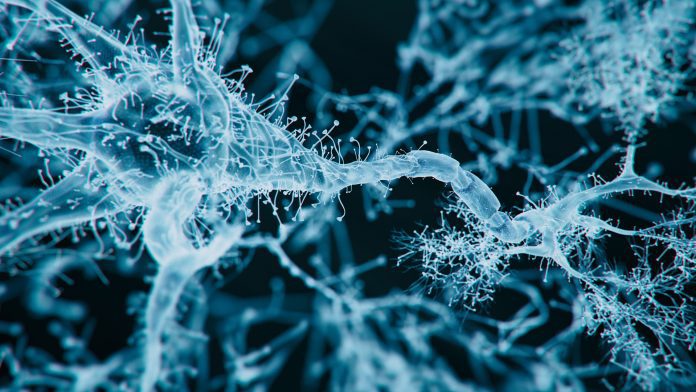
A collaborative endeavour between Irish researchers and their international partners has devised an innovative method for remedying peripheral nerve damage.
The team that comprises experts from the RCSI University of Medicine and Health Sciences, AMBER, the SFI Research Centre for Advanced Materials and BioEngineering Research, and Integra LifeSciences, an industry-leading medical technology company, has revealed a novel therapy for repairing peripheral nerve damage. The groundbreaking technique is based on the body’s nerve repair processes.
The study’s findings are published in the journal Matrix Biology.
Peripheral nerve damage: A global issue
Previous research has illustrated the vast scope of peripheral nerve damage globally, with the condition impacting over five million people worldwide, making it a major clinical issue and rendering those affected with loss of motor or sensory function to their muscles or skin.
Traditional therapies that repair nerve damage consist of transplanting the patients’ healthy nerves to repair the damaged ones or implanting an artificial nerve guidance conduit. In contrast, the teams’ patented creation takes an innovative approach. Their technique for treating peripheral nerve damage has been demonstrated to increase the density of regenerating long-nerve structures – axons – and generate a strong increase in blood vessel density to support regenerating tissues robustly.
Testing the method
The researchers conducted a pre-clinical study that showed that the use of extracellular matrix (ECM) facilitates the regeneration of nerve fibres across large nerve defects without the need for additional cells or growth factors. The team’s ECM-loaded medical device, called the nerve guidance conduit, was shown in these pre-clinical trials to enhance recovery responses at eight weeks following the repair of traumatic nerve lacerations that had substantial loss of tissue.
The experts ascertained that refining the combination and ratio of ECM proteins and loading them into the nerve guidance conduit could support increased pro-repair inflammation, increased blood vessel density, and increased density of regenerating nerves compared to standard care. This new approach may potentially eliminate the need for additional stem cells and drug therapies as it mimics the body’s nerve repair process.
The lead authors of the research, Dr Alan Hibbitts and Dr Zuzana Kočí from the Tissue Engineering Research Group based at Department of Anatomy and Regenerative Medicine at RCSI, and AMBER, said: “In our lab-based trials, we discovered that at eight weeks post-implantation our nerve guidance conduit had successfully improved the prognosis for nerve regeneration and repair over the current clinical gold standard. Our conduit supported clear improvements in nerve repair and blood vessel formation, and most importantly, we saw that we could scale this up to approach very large nerve defects in our pre-clinical studies.”
Professor Fergal O’Brien, Principal Investigator on the project and Professor of Bioengineering and Regenerative Medicine, Head of Tissue Engineering Research Group at RCSI and Deputy Director of AMBER, said: “Working with Integra Chief Scientist, Dr Simon Archibald, the research had a clear focus – to create a device based on scientific excellence with improved outcomes that would translate well through regulatory assessment, into the clinical setting, and ultimately, patients. This provides a more direct route to market and therefore the potential for faster real-world impact in improving patient quality of life.”
Dr Simon Archibald said: “We have partnered with Professor Fergal O’Brien and his team at RCSI to innovate new solutions in regenerative medicine since 2005, and over that time, we have rapidly accelerated the development and translation of new biomaterials. We are enthusiastic about the future potential of this iterative innovation to address long-gap nerve repair, building on our current leading clinical materials for short-gap nerve repairs. Placing Integra at the coalface of research enables us to bring our expertise to the heart of the scientific process and identify clinically relevant solutions based on cutting-edge science to improve patient outcomes and the most efficient pathway from the lab to a clinical setting.”
Speaking about his teams’ future plans, Professor O’Brien commented: “Our new ECM-enhanced nerve guidance conduits are part of my team’s ongoing research to address long peripheral nerve defects in partnership with Integra LifeSciences. The outputs from this project will address increasingly challenging nerve defect distances with the ambition to relieve the current clinical reliance on grafted nerves and move into the next phase of pre-clinical trials. Our partnership with Integra LifeSciences has been essential to this process, and we look forward to an ambitious programme of work that will advance continued enhanced treatments for nerve damage and injury.”







